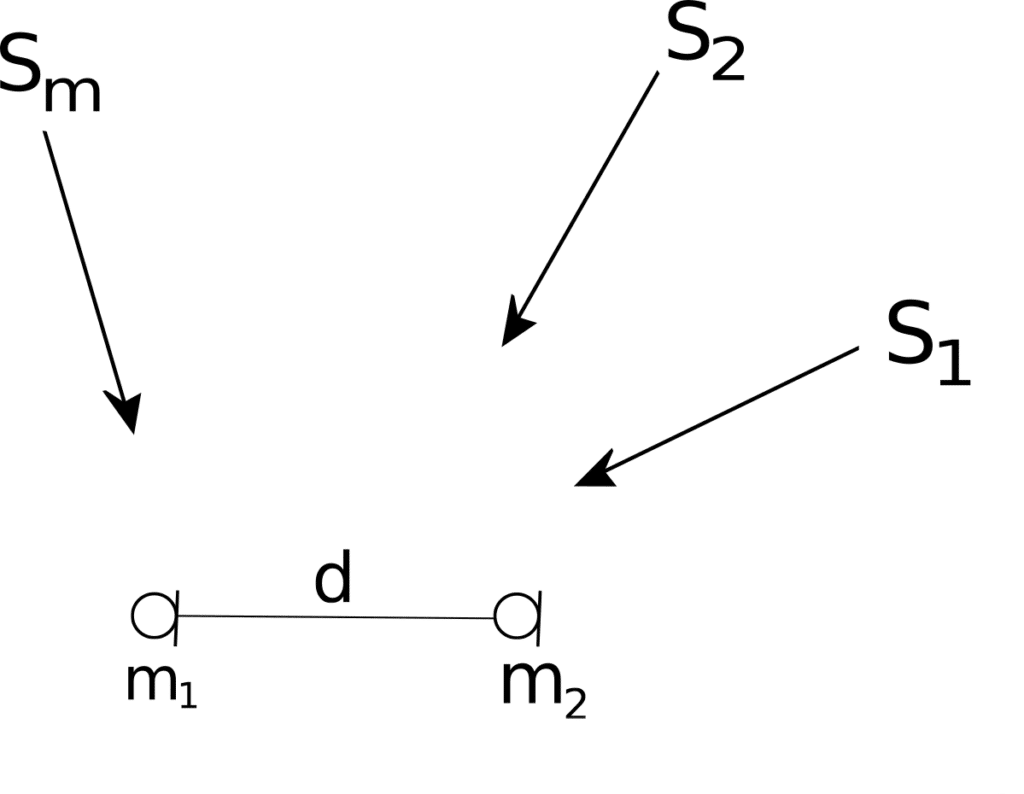Blind source separation (BSS) is a problem that arises when we desire to separate a number of sources from a mixture measurement. The system is illustrated in Figure 1 below.
 2 far field source impinging 2 microphones” width=”316″ height=”245″>
2 far field source impinging 2 microphones” width=”316″ height=”245″>
Figure 1: m source signals impinging 2 microphones
The accuracy of a BSS algorithm is not measured only with the accuracy of the mixing matrix estimate but also on the accuracy of the extracted signals from the original unmixed signals. Each source estimate of the signal can be characterized as
where
is a scaling factor and
is the estimation noise. It is easy to see that even in the case of a perfect separation —
–, conventional definition of relative distortion of
does not present a smooth criteria for distortion quantification. Any other value of will render the distortion non zero. An alternate definition of
can be used to make the quantification smoother. Thus, the scaling does not matter, if the noise term goes to zero, the distortion goes to zero. Another performance measure that is used is the total relative distortion which is given as
The total distortion metric has the added advantage that when the estimate is orthogonal to the desired source, the denominator causes the distortion to approach infinity. So called metrics such as source to interference ratio (SIR) and source to artifact ration (SAR) are all based off the total distortion. Here the noise term is separated into noise, artifact due to non linear zeros, and interference from other sources.
As a custom design house, VOCAL Technologies offers custom designed solutions for blind signal separation with a robust voice activity detector, acoustic echo cancellation and noise suppression. Our custom implementations of such systems are meant to deliver optimum performance for your specific beamforming task. Contact us today to discuss your solution!